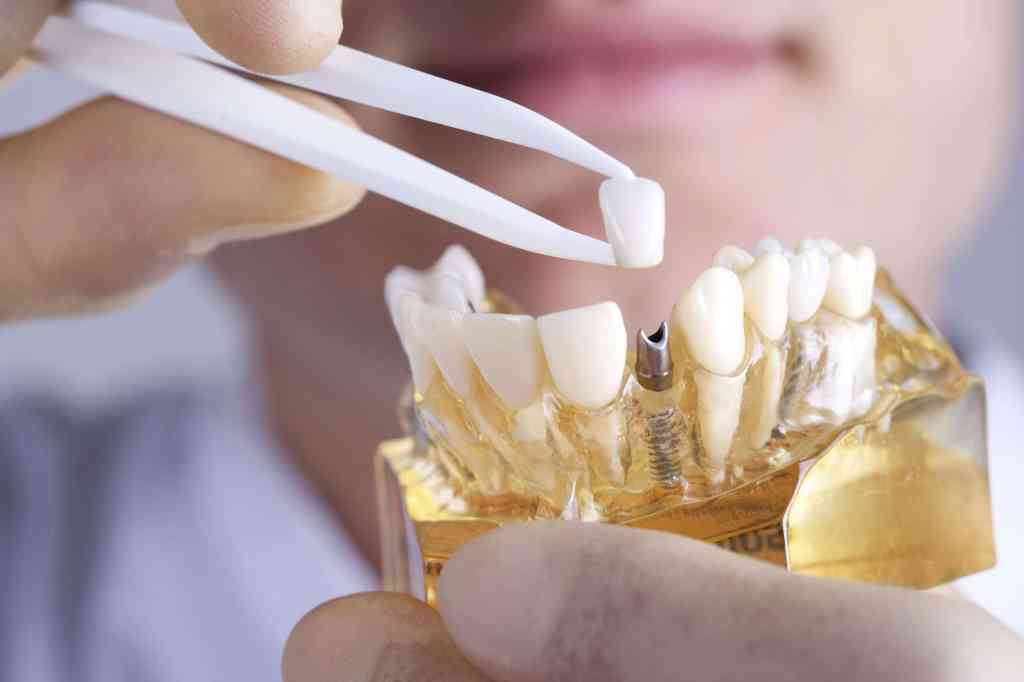You know how some things are cute when you’re little? Like mismatched shoes or rocking a big smile full of missing teeth, for instance.
Fast forward to adulthood and missing teeth becomes more concerning than cute. If you have missing teeth, either from an extraction, because your adult teeth never grew in or because the teeth fell out from decay. Maybe you have an infection or a crack? You probably want to get them replaced for aesthetic reasons. But have you ever wondered what could happen if you didn’t replace your missing teeth?
Why it’s important to replace missing teeth
All of your teeth serve a purpose, and it is a bigger purpose than what you probably realize. Aside from serving a functional purpose, which is aiding in proper chewing and word pronunciation, your teeth also impact your appearance. It’s hard to show off your killer smile when your teeth are missing. Or, maybe you lost some posterior teeth and you’re thinking, “No one even knows my teeth are missing, so it doesn’t impact my smile or my appearance.” But, think again. The rest of your teeth and jaw bone can suffer severe consequences if you don’t replace your missing teeth, leaving you with more problems than you bargained for.
What happens if I don’t replace missing teeth?
Over time, if you don’t replace missing teeth, several things can happen.
Malocclusion of teeth
Malocclusion is a term used to describe a number of conditions that affect the alignment of your teeth or bite. Two types of malocclusion that you’re probably familiar with are an overbite and underbite. Another type of malocclusion can occur when you don’t replace missing teeth. The teeth next to the gap will tend to shift toward each other in efforts to fill it. Now, you’re left with a partial gap and crooked teeth.
Super-eruption of opposing teeth
When a tooth super erupts, it means that it essentially overgrows. The tooth opposite of the gap will try to compensate for that missing tooth by growing longer, and it will because there is nothing there to stop it. Couple this phenomenon with malocclusion and you’re left with a mixed bag of crooked and overgrown teeth.
Bone resorption of missing teeth
If the two above consequences of not replacing missing teeth weren’t enough, another is bone resorption or loss. You know the old adage, “If you don’t use it, you lose it?” The same can happen to your gums and jaw bone. Without teeth to support, your gums and jaw bone begin to deteriorate since there is nothing there to stimulate them. As a result of the bone loss, your cheeks and lips can begin to look sunken in, ageing you.
Missing teeth options
If you have missing teeth, there are three common treatment options: bridges, a dental implant or partial dentures.
Bridges literally span the missing tooth and are made up of two or more dental crowns, which are tooth-shaped caps, and a false tooth. The bridge is cemented to the surrounding natural teeth or dental implant to fill the gap.
Dental implants are titanium posts that are surgically placed and serve as an anchor for the dental crown.
Partial dentures have a gum-colored plastic base similar to a retainer, but with false teeth attached. It clasps onto your natural teeth and can be easily inserted or removed.
The type of tooth replacement option that is best for you depends on a number of factors including how many teeth are missing and what you can afford.
Does dental insurance cover tooth replacement?
Most dental insurance plans offer 100/80/50 coverage.
This means that your dental policy will cover:
- Up to 100% of routine preventive and diagnostic care
- Up to 80% of basic services
- Up to 50% of major services
Crowns, dentures, bridges, and implants are all considered major services, so your dental insurance plan will likely pay 50% of the cost. However, considering most dental insurance plans have an annual maximum of $1000 or $1500, you will be responsible for all dental costs exceeding this.
Affordable alternatives to dental insurance
To get the most bang for your buck, look into a dental savings plan. A dental savings plan works like a membership program. For an annual membership fee, you get access to discounts between 10% and 60% off the cost of most dental services, including major dental services. All you have to do is visit one of the 100,000 participating dentists to enjoy the savings.
Replace missing teeth for less
If you have missing teeth or just a missing tooth, be sure to get it checked out by your dentist. Your dentist can discuss both surgical and non-surgical tooth replacement options with you to help you decide what will work best for you, so you can have a smile you’re proud to show off.
